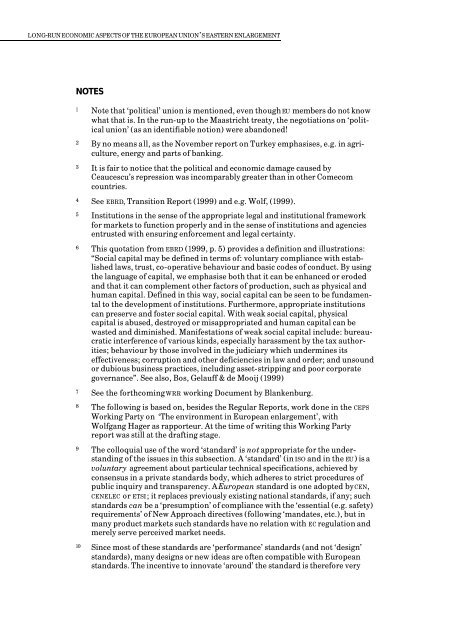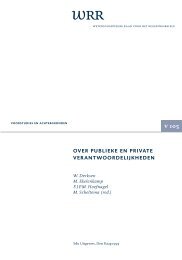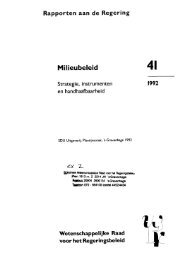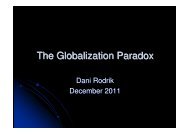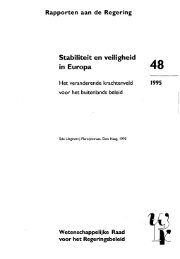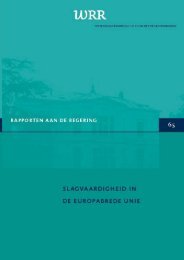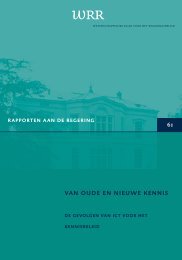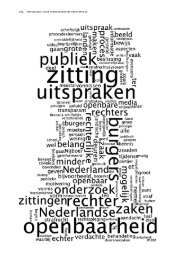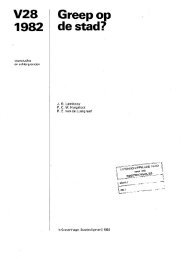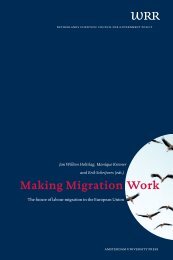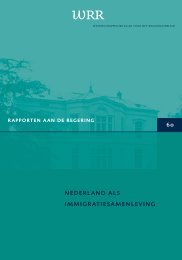w 109 long-run economic aspects of the european union's eastern ...
w 109 long-run economic aspects of the european union's eastern ...
w 109 long-run economic aspects of the european union's eastern ...
Create successful ePaper yourself
Turn your PDF publications into a flip-book with our unique Google optimized e-Paper software.
LONG-RUN ECONOMIC ASPECTS OF THE EUROPEAN UNION’S EASTERN ENLARGEMENTNOTES1 Note that ‘political’ union is mentioned, even though EU members do not knowwhat that is. In <strong>the</strong> <strong>run</strong>-up to <strong>the</strong> Maastricht treaty, <strong>the</strong> negotiations on ‘politicalunion’ (as an identifiable notion) were abandoned!2 By no means all, as <strong>the</strong> November report on Turkey emphasises, e.g. in agriculture,energy and parts <strong>of</strong> banking.3 It is fair to notice that <strong>the</strong> political and <strong>economic</strong> damage caused byCeaucescu’s repression was incomparably greater than in o<strong>the</strong>r Comecomcountries.4 See EBRD, Transition Report (1999) and e.g. Wolf, (1999).5 Institutions in <strong>the</strong> sense <strong>of</strong> <strong>the</strong> appropriate legal and institutional frameworkfor markets to function properly and in <strong>the</strong> sense <strong>of</strong> institutions and agenciesentrusted with ensuring enforcement and legal certainty.6 This quotation from EBRD (1999, p. 5) provides a definition and illustrations:“Social capital may be defined in terms <strong>of</strong>: voluntary compliance with establishedlaws, trust, co-operative behaviour and basic codes <strong>of</strong> conduct. By using<strong>the</strong> language <strong>of</strong> capital, we emphasise both that it can be enhanced or erodedand that it can complement o<strong>the</strong>r factors <strong>of</strong> production, such as physical andhuman capital. Defined in this way, social capital can be seen to be fundamentalto <strong>the</strong> development <strong>of</strong> institutions. Fur<strong>the</strong>rmore, appropriate institutionscan preserve and foster social capital. With weak social capital, physicalcapital is abused, destroyed or misappropriated and human capital can bewasted and diminished. Manifestations <strong>of</strong> weak social capital include: bureaucraticinterference <strong>of</strong> various kinds, especially harassment by <strong>the</strong> tax authorities;behaviour by those involved in <strong>the</strong> judiciary which undermines itseffectiveness; corruption and o<strong>the</strong>r deficiencies in law and order; and unsoundor dubious business practices, including asset-stripping and poor corporategovernance”. See also, Bos, Gelauff & de Mooij (1999)7 See <strong>the</strong> forthcoming WRR working Document by Blankenburg.8 The following is based on, besides <strong>the</strong> Regular Reports, work done in <strong>the</strong> CEPSWorking Party on ‘The environment in European enlargement’, withWolfgang Hager as rapporteur. At <strong>the</strong> time <strong>of</strong> writing this Working Partyreport was still at <strong>the</strong> drafting stage.9 The colloquial use <strong>of</strong> <strong>the</strong> word ‘standard’ is not appropriate for <strong>the</strong> understanding<strong>of</strong> <strong>the</strong> issues in this subsection. A ‘standard’ (in ISO and in <strong>the</strong> EU ) is avoluntary agreement about particular technical specifications, achieved byconsensus in a private standards body, which adheres to strict procedures <strong>of</strong>public inquiry and transparency. A European standard is one adopted by CEN,CENELEC or ETSI; it replaces previously existing national standards, if any; suchstandards can be a ‘presumption’ <strong>of</strong> compliance with <strong>the</strong> ‘essential (e.g. safety)requirements’ <strong>of</strong> New Approach directives (following ‘mandates, etc.), but inmany product markets such standards have no relation with EC regulation andmerely serve perceived market needs.10 Since most <strong>of</strong> <strong>the</strong>se standards are ‘performance’ standards (and not ‘design’standards), many designs or new ideas are <strong>of</strong>ten compatible with Europeanstandards. The incentive to innovate ‘around’ <strong>the</strong> standard is <strong>the</strong>refore very


